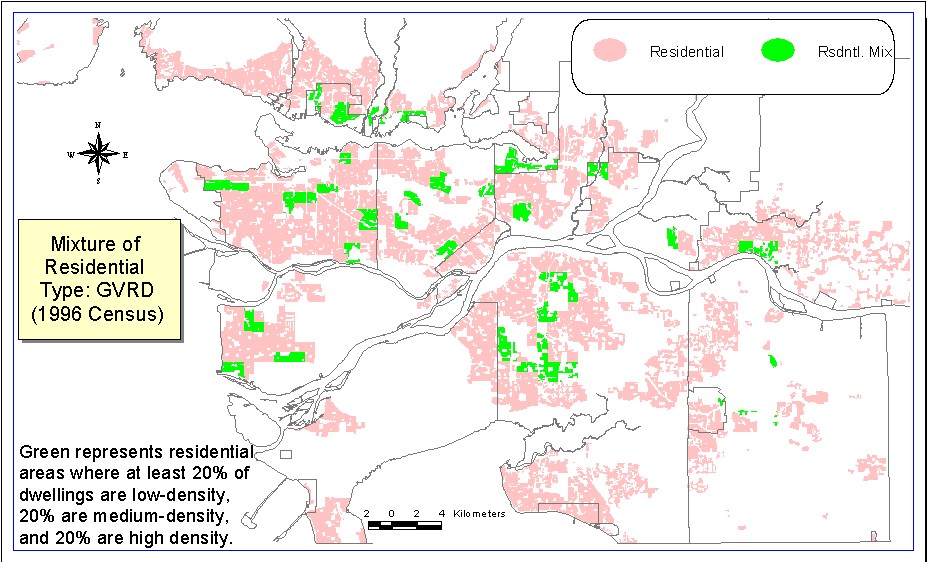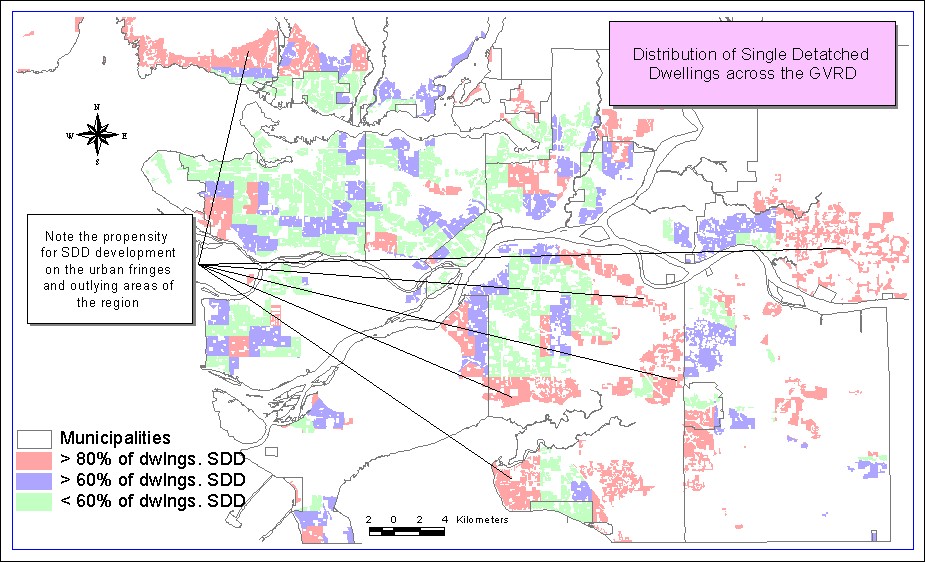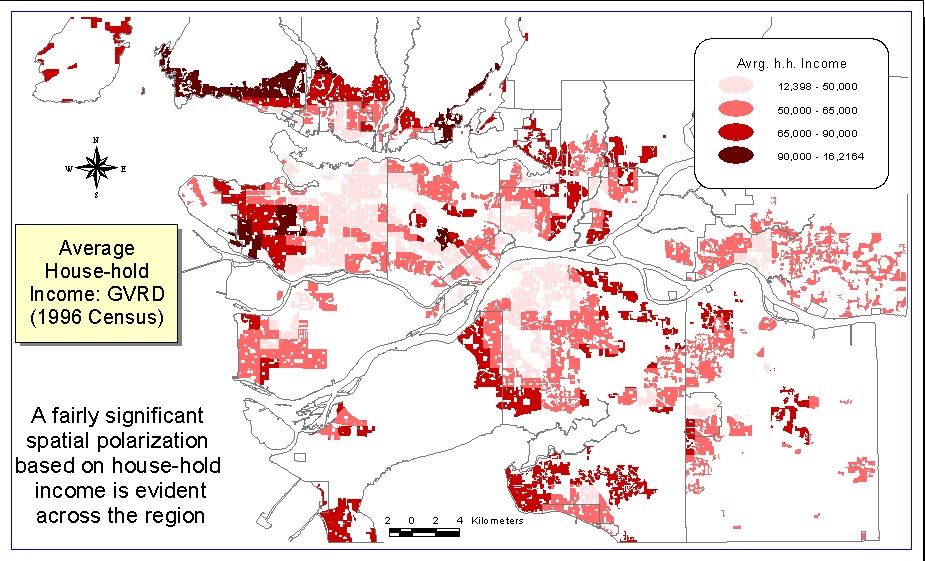Achieving a Mixture of Housing Types,
Tenures and Costs.
Historically, housing development
in Greater Vancouver has been predominantly single-detached dwellings (SDD’s)
and apartment housing, and to a much lesser extent, ground oriented medium
density dwellings. The LRSP contains a policy aimed at expanding the supply
of a variety of ground-oriented housing units, such as town houses, row
houses, and duplexes. In terms of land use, the predominance of SDD’s in
the region means that they consume by far the largest amount of land (on
average between roughly 2-5 dwellings per acre) compared with other dwelling
types, and new SDD development requires significant consumption of rural,
agricultural, and previously undeveloped ‘greenfield’ sites, a fast disappearing
commodity across the region.
Between 1991 and 1996, the GVRD added
approximately 83,500 dwellings, by far the largest 5 year increment on record.
Encouragingly, 51.5 per cent of this growth consisted of apartment dwellings,
33.2 per cent consisted of ground oriented medium density dwellings (GOMD’s),
and only 15.6 per cent consisted of SDD’s (GVRD, 1998). However, in 2000,
the traditional regional preference for SDD’s re-emerged, when of the approximately
9,100 new dwellings completed in the region, 36 per cent of them were SDD’s,
a significant increase from the 91’ to 96’ rates, but still below earlier
rates (GVRD, 2001). Although this is less than the historical mix of housing
completions across the region, SDD developments are still consuming far more
land on predominantly ‘green field’ sites than the other types of housing
developments, particularly in less developed and built up municipalities
such as those in the south of Fraser sub-region where there is still a fair
bit of un protected rural, agricultural, and open and undeveloped land.
The extent to which there is a mix
of housing types throughout the region is shown below based on 1996 census
data. The map shows those residential areas where there is a mixture
of low, medium, and high-density dwellings of at least 20% each.


